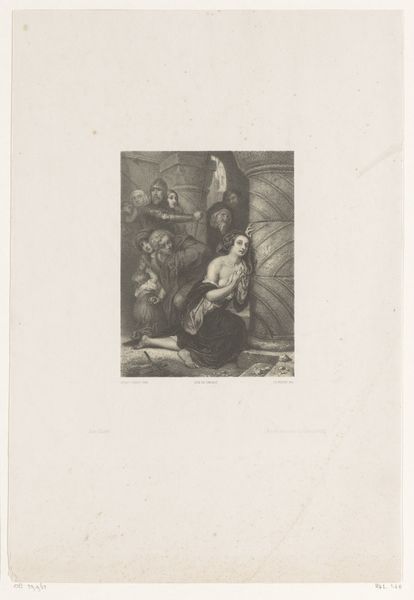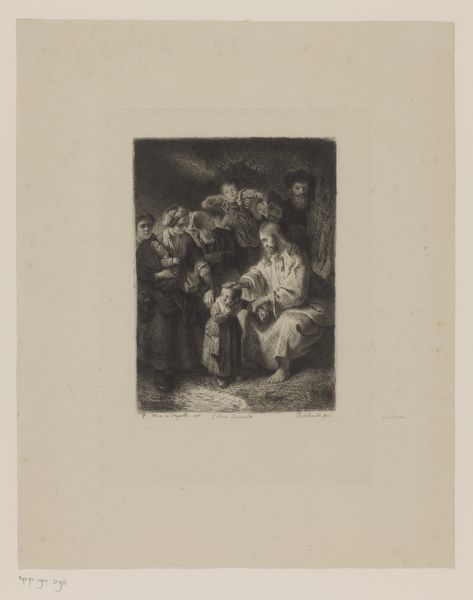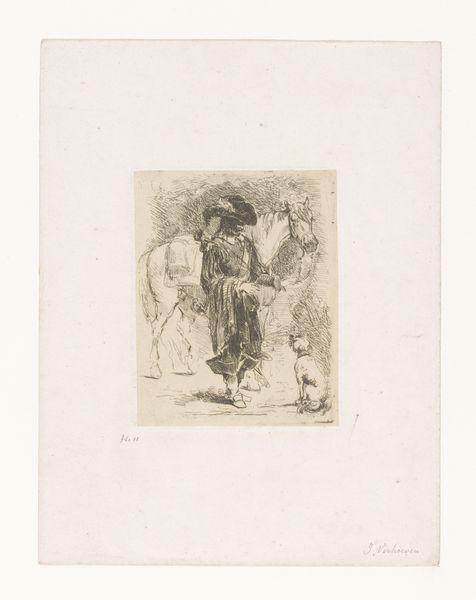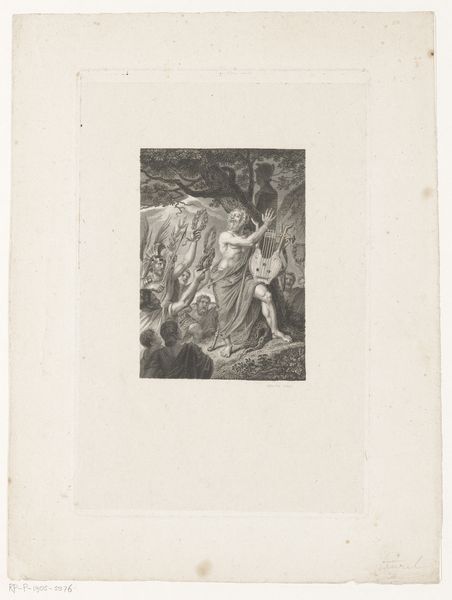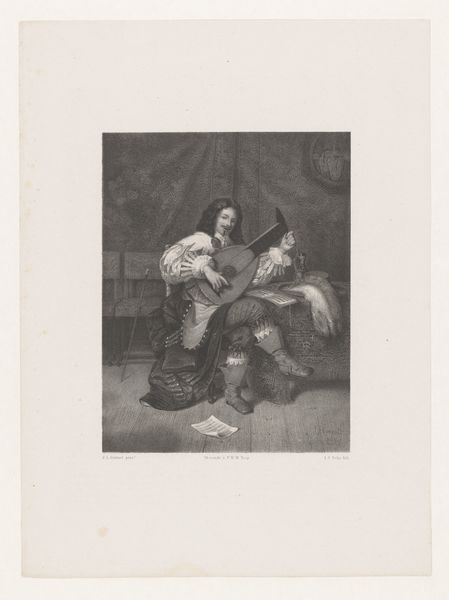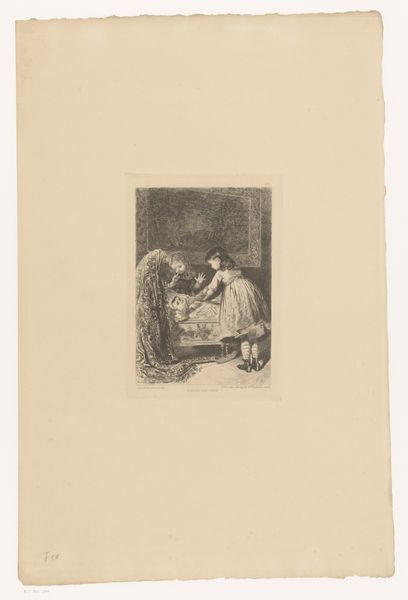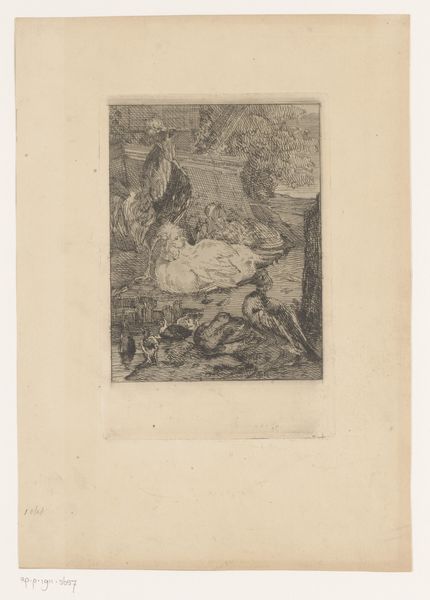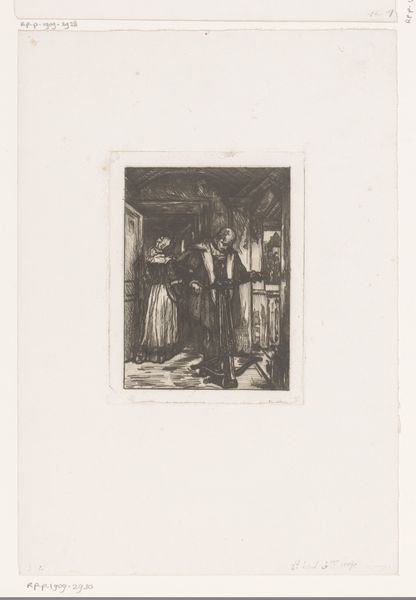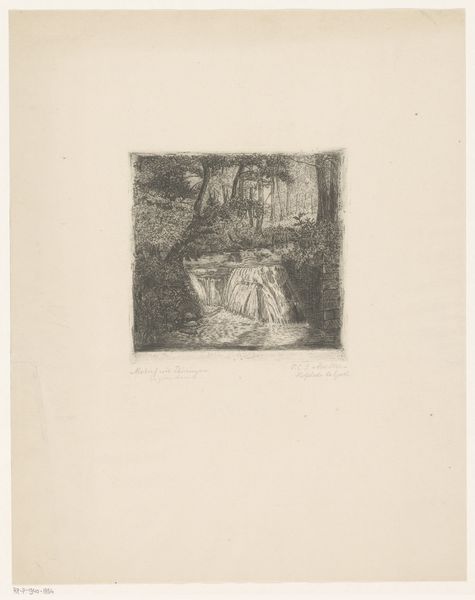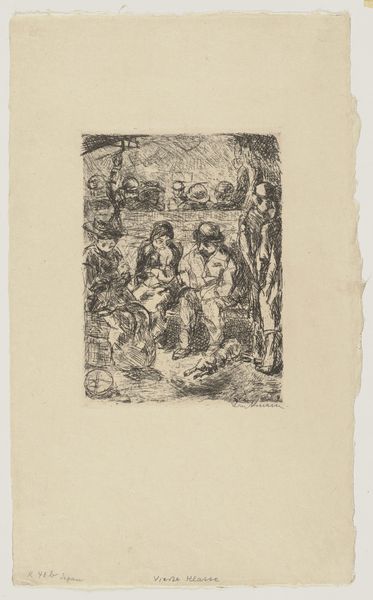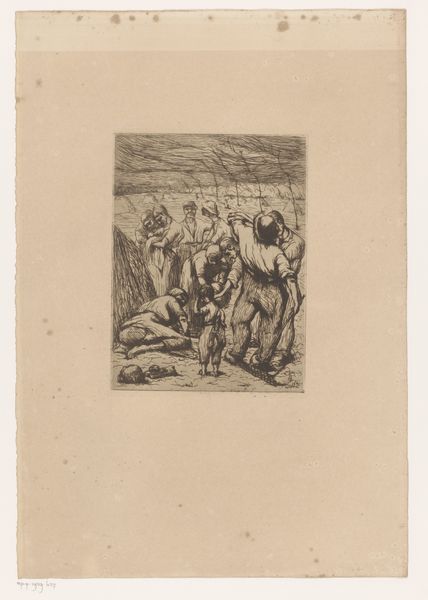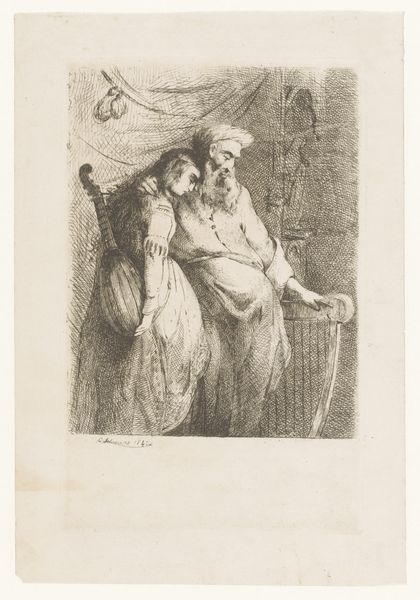
Dimensions: height 117 mm, width 85 mm
Copyright: Rijks Museum: Open Domain
Curator: This etching, created sometime between 1853 and 1900, is titled "Five Figures Seated on Church Pews." It’s attributed to the artist Albrecht de Vriendt, and is part of the Rijksmuseum collection. Editor: There's something so stark and still about this. The etching is so detailed, even down to the floor tiles, and it invites speculation on these peoples stories, which look a little forlorn and detached, like silent observers to a history. Curator: De Vriendt worked primarily in history and genre painting, so his focus on figuration in this piece aligns with his wider artistic practice, where the visual conventions of Romanticism shape much of his presentation. Editor: Looking at it through the lens of social history, I wonder about their positioning and if the women depicted were allowed a real voice within the church or if the visual presence gave only the impression of the inclusion within a social and religious narrative, particularly during the era in which it was produced. Curator: The seating arrangements, and the somewhat solemn expressions on their faces, reflect, I think, an attitude common in European churches in the 19th century, one deeply informed by the role and position of the family as social institution. The attention given to details like clothing also suggest how people outwardly presented themselves in society. Editor: Right. And that external presentation speaks volumes. What are they communicating through their dress, posture, and relationship to the religious setting around them? Their story as much reflects the church’s position on these congregants within it. Do we perhaps see quiet resistance to the church's doctrines within these silent figures? Curator: It’s that delicate tension between internal thought and external conformity which, I think, defines the character of this Romantic era depiction. Thank you for raising so many provocative and, for me, generative lines of thought here. Editor: Likewise, it's a testament to de Vriendt’s skill in capturing that social and emotional landscape within this small print, encouraging questions about who is included in dominant historical narratives, and who is, or was, perhaps overlooked.
Comments
No comments
Be the first to comment and join the conversation on the ultimate creative platform.
